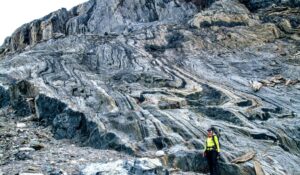When you type in the coordinates 34°15’07.8″ S by 58°49’47.4″ W in Google Earth, what do you see? Is that an eye staring back at you?
Tucked deep in the marshlands of Parque Nacional Ciervo de los Pantanos in Argentina is the mysterious El Ojo, or “The Eye”. Surrounded by swampy ground, it really does look from the air like an eye staring up at the camera. The astounding thing is, it seems to act like one too…
Argentinian filmmaker Sergio Neuspiller discovered El Ojo accidentally in 2016 when prowling Google Earth for possible paranormal phenomena. When he stumbled on this weird-looking formation in the Paraná Delta, he set out to discover what it actually was.
El Ojo turned out to be an island within a shallow channel of very clear and cold water. It is a near-perfect circle of land, measuring 118-120m in diameter. After taking a look at the island on Google Earth a couple of times, Neuspiller noticed a change in its position in the pond. He did not expect to discover that the island was floating around its little basin. Uniquely, it rotated on its own axis. It was, in effect, a rolling eye.

El Ojo from Google Earth. Photo: Google Earth
Most internet sources say that El Ojo has existed in the Paraná Delta since 2003. Usually, floating islands are simply accumulations of aquatic plant material in small lakes or ponds. They drift around after the water gets too deep for the roots of aquatic plants like reeds and cattails.
Several floating islands exist around the world, in Turkey, Italy, Finland, the United States, Democratic Republic of the Congo, and Zambia. Typically, they are loose and spongy and act like little rafts. They provide safe habitats for many aquatic creatures.
However, such islands do not rotate on their own axis. Also, El Ojo’s patch of land is surprisingly firm.

The Floating Islands (Longoz) in Bingol, Turkey. Photo: Ender BAYINDIR/Shutterstock
Some speculate that there may be similarities to ice discs, almost perfect circles of ice on a river’s outer bend that spin on slow-moving currents. These result from a force called rotational shear. This occurs when current breaks off a piece of ice and rotates it, thus forcing the ice to grind against the bend. This creates a circular shape. Ice discs can even rotate in still waters when changes in temperatures and density create a very gentle circular movement.

A rotating ice disc on a river in China. Photo: Xing’An Daily
It is possible that this chunk of land broke off and rotational shear caused it to spin, grinding against the land’s edges and smoothing it out into an almost perfect circle. Some attribute the phenomenon to a natural well within the marshes. This would explain how the island moves ever so gently and consistently. However, this does not explain why the land is so firm compared to its soft, marshy surroundings.
In order to look more deeply into the mystery, Neuspiller enlisted the help of an American engineer named Ricardo Petroni. The pair hoped to raise $50,000 for research but were unable to reach their goal. As of now, no progress has been made in discovering more about El Ojo.






